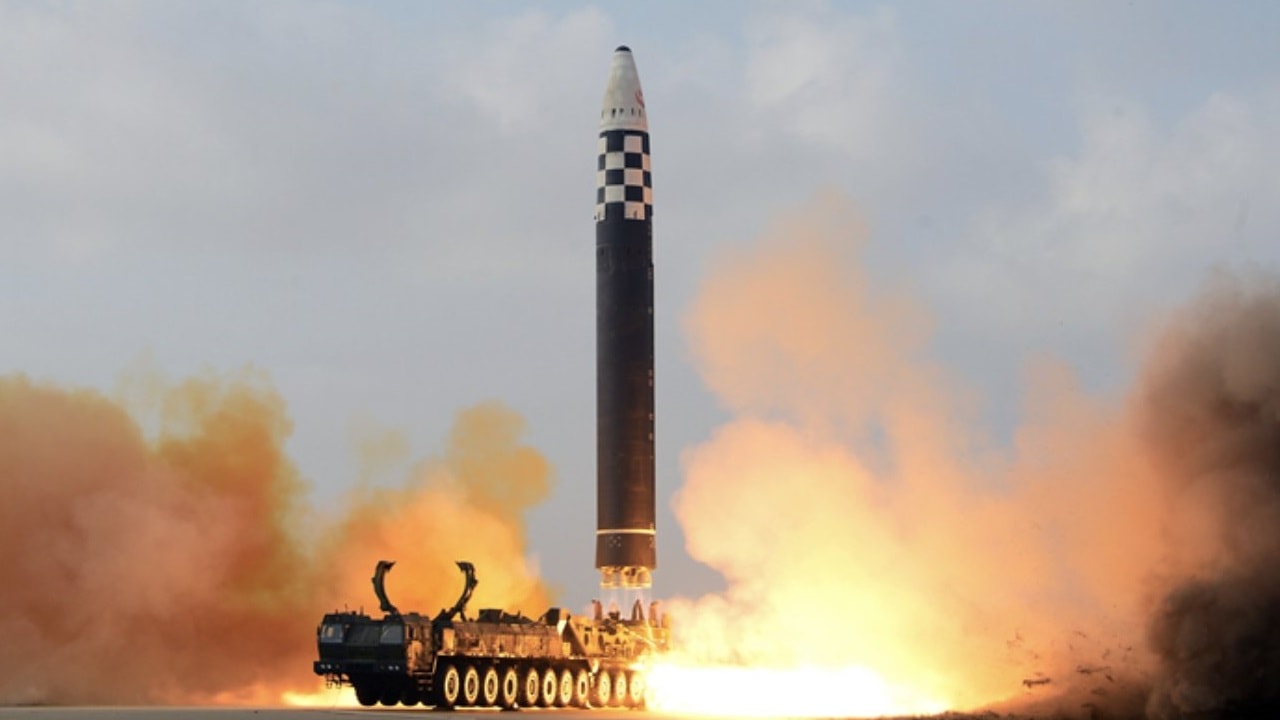At the Trilateral Leaders’ Summit at Camp David in August, the leaders of the United States, Japan, and South Korea agreed to cooperate more fully on ballistic missile defense. To quote the document released by the White House, “The United States, Japan, and the ROK affirmed the decision to activate a data-sharing mechanism to exchange real-time missile warning data that would improve the detection and assessment of DPRK missile launches, building upon the commitment made by Leaders at their meeting in Phnom Penh last year.”
It seems the sides should get on that as quickly as possible. Research carried out by Theodore Postol for CSIS indicates that North Korea’s solid-fuel Hwasong-18 missile might be far more advanced, and a much greater threat, than most analysts assessed from its early testing. Why? It seems likely the North Koreans developed this missile with direct Russian technical and engineering assistance.
The Hwasong-18 shares a good number of characteristics with the Russian Topol-M ICBM (SS-27 Mod 2) — although the two are not exactly alike. The missiles have similar diameters, and they share comparable capabilities and flight paths.
But let’s address this from a practical view as well. It is highly improbable that the North Koreans by themselves came up with the solid-fuel technology and designs for an ICBM. They had to get help from somewhere, and they had to get the technology from somewhere, too. The similarities between the North Korean Hwasong-18 and the Russian Topol-M suggest Moscow as the provider. Given how fast this North Korean system rolled out, it is also unlikely that rogue scientists or engineers were responsible, as was the case with the Musudan missile based on the Russian R-27/SS-N-6.
Sudden Threat Over Korea
Over the past five years we have seen the North Koreans test and deploy several modern systems that elevate the threat on the Korean Peninsula. These include a North Korean copycat of the Iskander short-range ballistic missile, a weapon that in turn looks very much like the American MGM-140 ATACMS system. North Korea appears to be working to develop hypersonic capabilities for this missile, as well as long-range multiple rocket launchers that use guidance systems and can cover large swaths of the Korean Peninsula.
Where did these systems suddenly appear from? It is very likely that most of them came from the Russians. In fact, a review of sanctions against Russian entities and individuals over the past three years reveals several sanctions that deal directly with proliferation to North Korea (though the systems involved are not specified).
U.S. in the Crosshairs of the Hwasong-18
Most of the systems North Korea has tested or deployed over the past five years are designed for combat on the Korean Peninsula. The new Hwasong-18 clearly is not. North Korea would likely use this ICBM to attack the United States. Thus, is it possible that North Korean leader Kim Jong Un asked his Russian allies to equip him both with tactical systems for use on the Peninsula, and an ICBM that could credibly threaten the United States? If so, the North Koreans are pursuing serious measures to exacerbate the threat they pose to the U.S., South Korea, and Japan.
Depending on how many ballistic capabilities the Russians provided to the North Koreans — if the Hwasong-18 is in fact a missile based on Russian technology — this development could completely change the way the United States, South Korea, and Japan conduct ballistic missile defense. The Russian missile is capable of getting through U.S. BMD with modern countermeasures. It can also launch multiple thermonuclear warheads. Finally, it is a missile accurate enough to target specific neighborhoods.
A Response Is Needed
Even if the Russians helped the North Koreans build a missile based on the Topol-M ICBM (SS-27 Mod 2), it remains unclear how many advanced capabilities the Hwasong-18 would carry. But the North Koreans got this missile from somewhere, and it is highly unlikely they developed it on their own. This in itself may be the most troubling aspect of recent disclosures regarding its design and capabilities.
The inevitable question is, what to do about this? Sanctions are the obvious answer, especially on Russian entities. But perhaps the best solution is to beef up ballistic missile defense in the Asia-Pacific region. South Korea certainly needs to upgrade its current missile defense systems. It also needs closer integration with the United States and, if possible, Japan. Using BMD and other methods to shoot down these new North Korean systems, or cripple them before they can do harm, can and should be part of the focus of U.S., South Korean, and Japanese military planning, exercises, and acquisition in coming years. Failure to do so will allow the threat to grow.
Dr. Bruce E. Bechtol Jr. is a professor of Political Science at Angelo State University. He is also the president of the International Council on Korean Studies and a fellow at the Institute for Corean American Studies. The author of five books dealing with North Korea, his latest work is entitled North Korean Military Proliferation in the Middle East and Africa. Dr. Bechtol is a 19FortyFive Contributing Editor.

